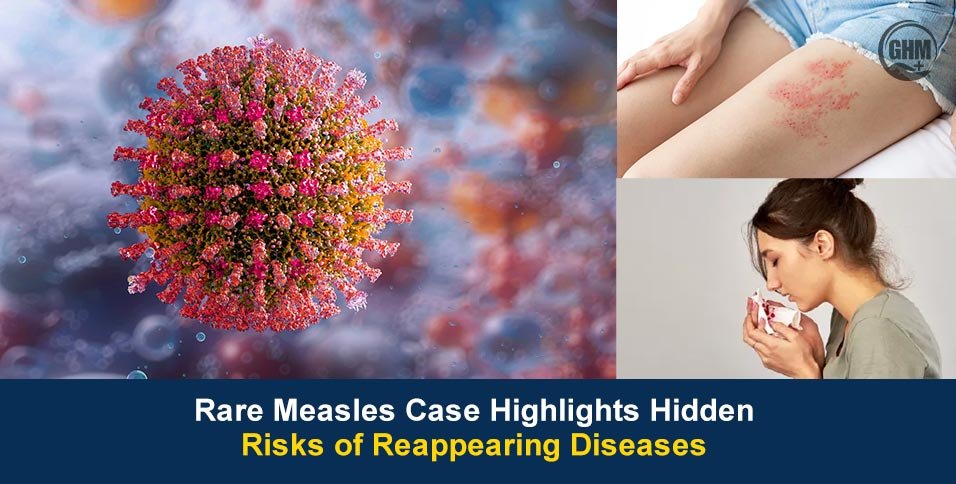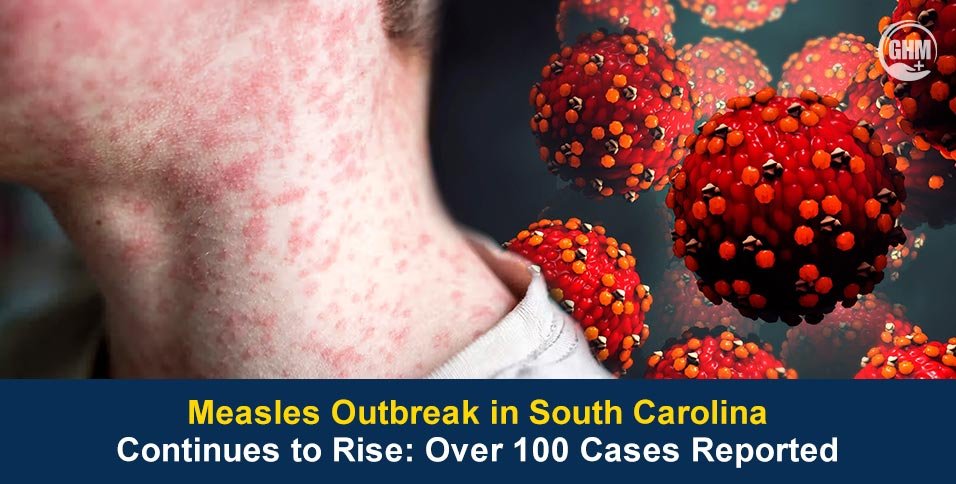A tragic case in Los Angeles has shocked health experts worldwide after a young child died from a rare and fatal complication of measles, subacute sclerosing panencephalitis (SSPE). What makes this case even more concerning is that the child had recovered from measles years ago, showing the risks of reappearing diseases.
Health officials confirmed that the child’s measles virus had stayed dormant in the brain, silently causing damage over time. When symptoms finally appeared, they included seizures, memory loss, and progressive neurological decline, all had started with SSPE.
This incident brings attention to a broader medical reality that some diseases can reappear after treatment, either because the virus remains hidden in the body or due to complications that develop later. Here’s a look at other such diseases, their symptoms, past cases, and modern advancements in prevention and treatment.
Reason Behind Recurrence
Not all diseases disappear after treatment. In some cases, pathogens remain dormant in the body, waiting for the right conditions to reactivate.
Other times, the body’s immune system response triggers long-term damage, creating health issues long after the infection is gone.
Diseases That Reappear After Treatment
Some common and rare diseases known to return after an apparent recovery,
1. Measles and SSPE
- How It Reappears: The measles virus can stay hidden in the brain for years, eventually causing subacute sclerosing panencephalitis (SSPE).
- Symptoms: Behavioral changes, seizures, loss of motor skills, and eventual coma.
- Consequences: Always fatal once symptoms begin.
- Past Example: The Los Angeles case is one of the latest, but similar cases have been reported worldwide, especially in areas with low vaccination rates.
- Advancements: Measles is entirely preventable through the MMR vaccine (measles, mumps, and rubella). Global vaccination efforts have significantly reduced the number of SSPE cases.
2. Chickenpox and Shingles
- How It Reappears: After someone recovers from chickenpox, the varicella-zoster virus stays dormant in nerve cells.
- Reactivation: Years later, it can reappear as shingles, a painful rash with blisters.
- Symptoms: Burning or stabbing pain, itchy rash, and in severe cases, nerve damage leading to postherpetic neuralgia.
- Past Example: Millions of adults worldwide experience shingles each year, with increased risk after age 50.
- Advancements: The Shingrix vaccine now helps prevent shingles in older adults and those with weakened immune systems.
3. Tuberculosis (TB)
- How It Reappears: TB bacteria can remain inactive in the body in a state called latent TB infection.
- Reactivation: When immunity weakens, the bacteria can reactivate and cause active TB, especially in the lungs.
- Symptoms: Persistent cough, chest pain, fatigue, weight loss, and fever.
- Consequences: Untreated TB can be fatal and spreads easily through the air.
- Past Example: According to the World Health Organization (WHO), around 25% of the global population has latent TB.
- Advancements: Newer TB drugs and shorter treatment regimens are helping reduce reactivation rates.
4. Malaria
- How It Reappears: Certain malaria-causing parasites, like Plasmodium vivax, can hide in the liver and reactivate weeks or months after initial treatment.
- Symptoms: Fever, chills, fatigue, and in severe cases, organ failure.
- Past Example: Relapses are common in regions like South Asia and Latin America.
- Advancements: Research is underway to develop vaccines targeting recurring malaria strains.
5. Hepatitis B and C
- How It Reappears: These viruses can cause chronic infections even after symptoms subside.
- Consequences: Over time, chronic hepatitis can lead to cirrhosis and liver cancer.
- Past Example: Hepatitis B remains a leading cause of liver disease worldwide, with millions of new infections each year.
- Advancements: Antiviral drugs and the hepatitis B vaccine have been game-changers in reducing chronic infections.
6. Polio and Post-Polio Syndrome
- How It Reappears: People who recovered from polio may develop post-polio syndrome decades later.
- Symptoms: Progressive muscle weakness, fatigue, and breathing difficulties.
- Consequences: While polio itself is now rare thanks to vaccines, survivors continue to face long-term challenges.
- Advancements: Rehabilitation programs and assistive devices help improve the quality of life for affected individuals.
Preventing Risks of Reappearing Diseases
Preventing reappearing diseases after treatment is possible with a combination of modern medicine and public health measures:
1. Vaccination
- Vaccines for measles, chickenpox, hepatitis B, and polio prevent the initial infection and its long-term effects.
2. Regular Health Check-Ups
- People who have had infections like TB or hepatitis should undergo routine monitoring to catch complications early.
3. Public Health Awareness
- Spreading awareness about reappearing diseases helps communities take early preventive action.
- Dispelling myths about vaccines is vital to prevent outbreaks.
Final Thoughts
Diseases like measles, chickenpox, TB, and malaria remind us that recovery doesn’t always mean the end of the story. Some infections leave a silent legacy, reappearing years or even decades later.
As global travel and urbanization increase, risks of reappearing diseases have more opportunities to spread and re-emerge. Staying informed and proactive is the best defense.
Through vaccination, advanced treatments, and awareness, many of these reappearing diseases can be prevented or controlled. The recent Los Angeles case serves as a wake-up call to prioritize public health and protect future generations.



















